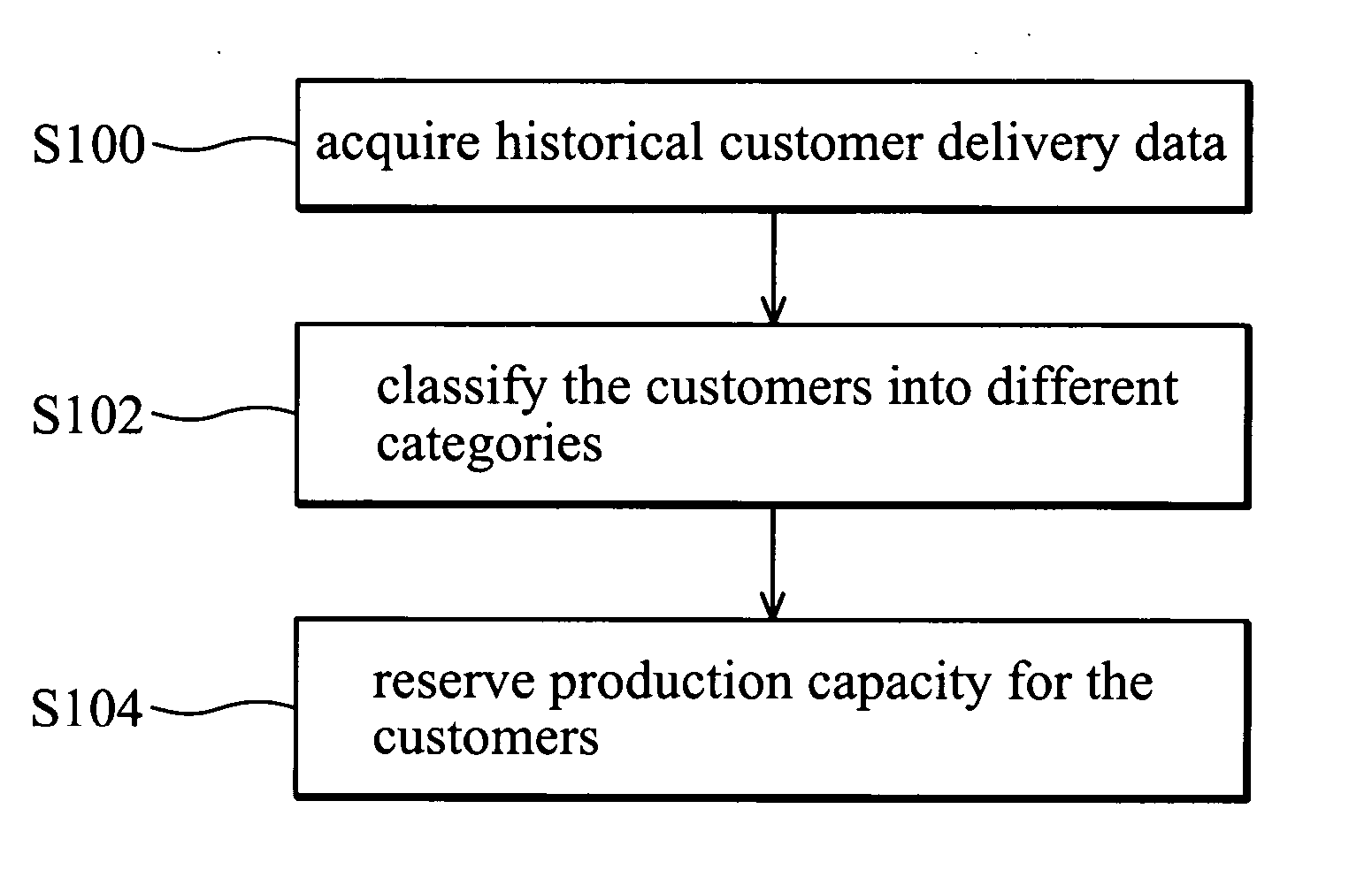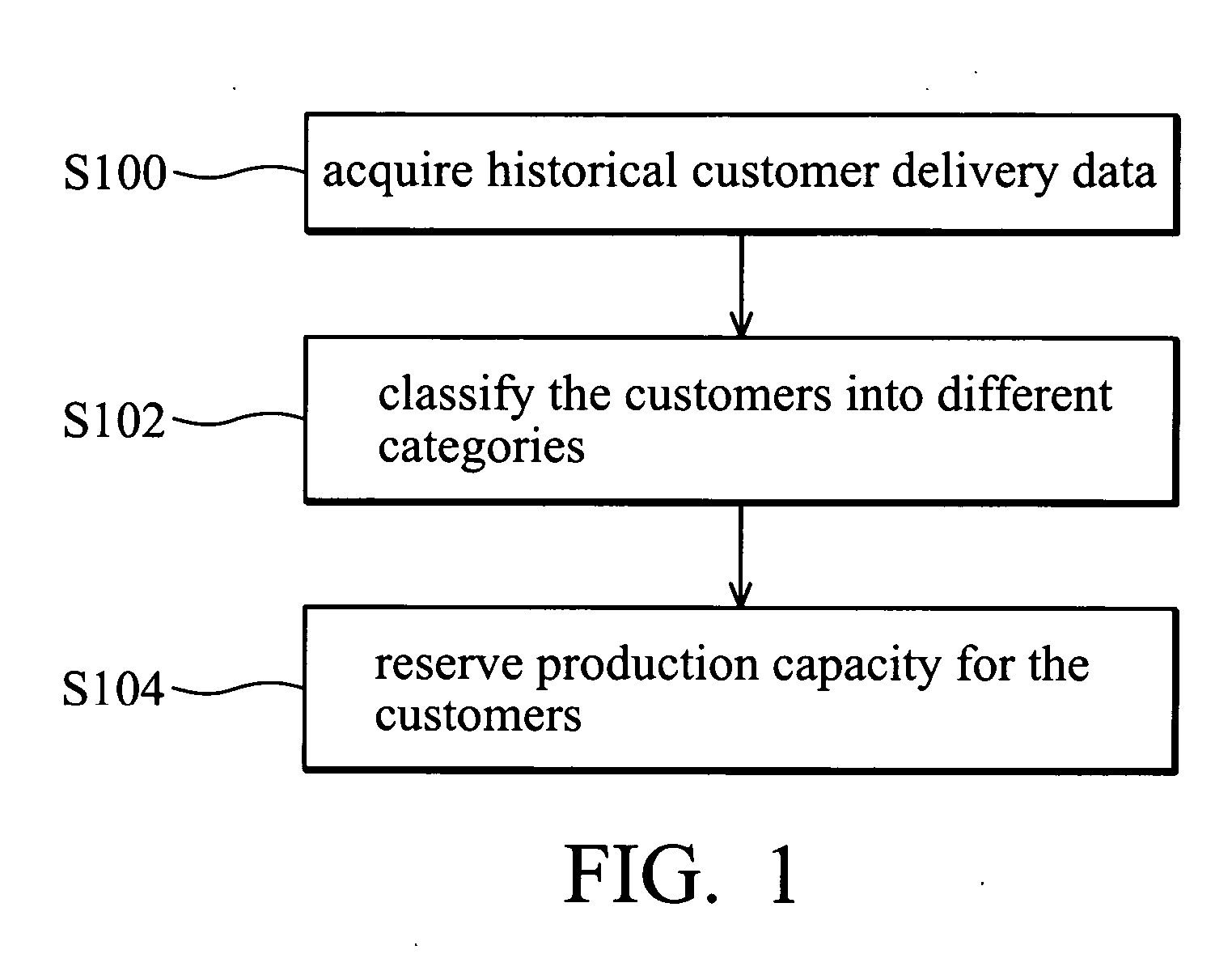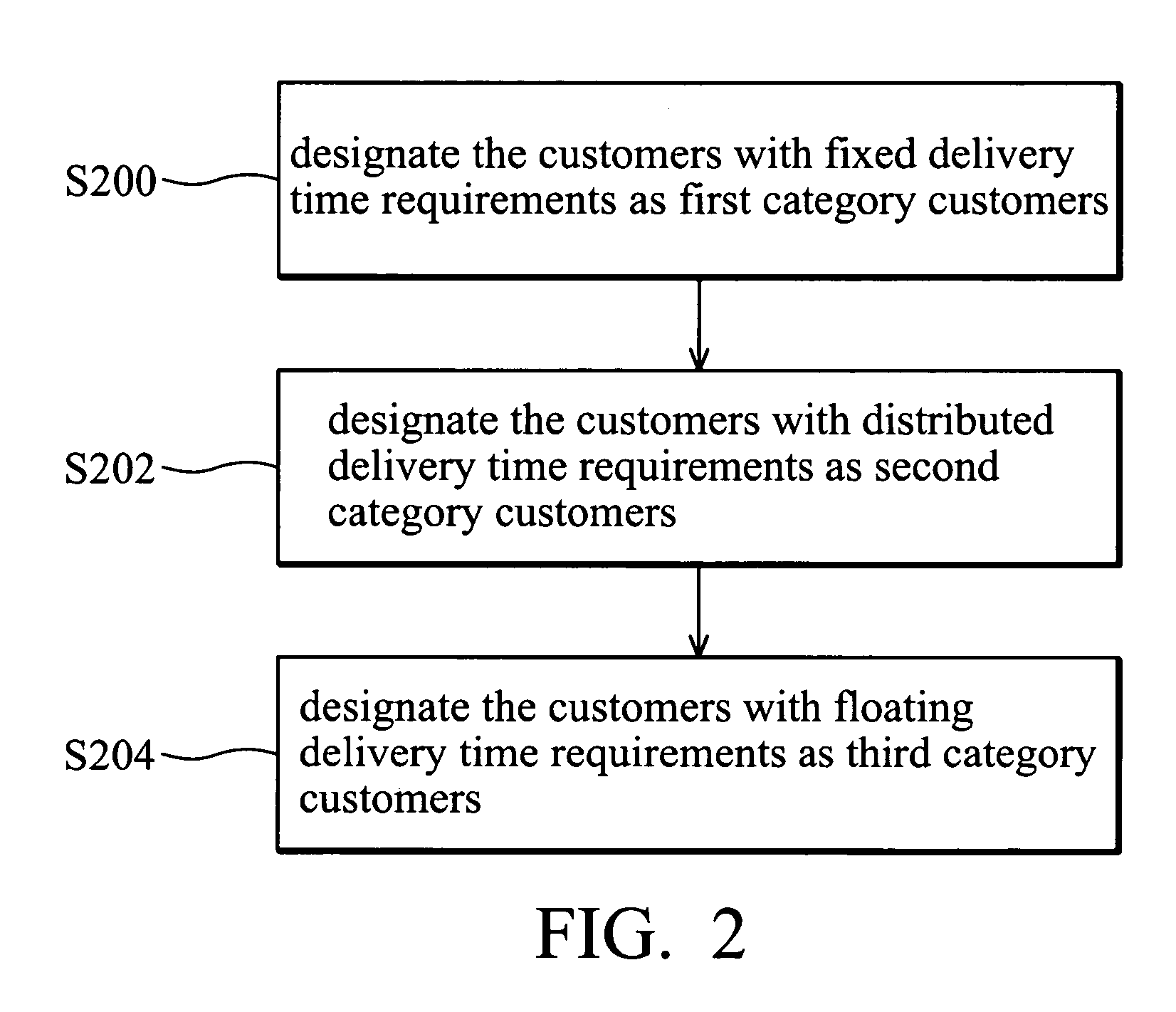Systems and methods for capacity reservation
a capacity reservation and system technology, applied in the field of capacity reservation schemes, can solve the problems of inability to allocate atp capacity according to individual customers, difficult management, reactive demand-based production model,
- Summary
- Abstract
- Description
- Claims
- Application Information
AI Technical Summary
Benefits of technology
Problems solved by technology
Method used
Image
Examples
Embodiment Construction
[0016] As summarized above, the present invention is directed to novel systems and methods for overcoming conventional capacity reservation deviation problems. In one embodiment, historical customer delivery data is acquired, including delivery time requirements corresponding to each customer. The delivery time requirements may comprise fixed delivery time requirements, distributed delivery time requirements, and floating delivery time requirements. Fixed delivery time requirements are generated when the customer requires products delivered on a fixed date. Distributed delivery time requirements are generated when the customer requires products delivered on regularly distributed dates, such as every Monday. Floating delivery time requirements are generated when the customer has no fixed delivery time requirement.
[0017] Next, customers are classified into different delivery category levels according to the historical customer delivery data. In particular, customers with fixed delive...
PUM
 Login to View More
Login to View More Abstract
Description
Claims
Application Information
 Login to View More
Login to View More - R&D
- Intellectual Property
- Life Sciences
- Materials
- Tech Scout
- Unparalleled Data Quality
- Higher Quality Content
- 60% Fewer Hallucinations
Browse by: Latest US Patents, China's latest patents, Technical Efficacy Thesaurus, Application Domain, Technology Topic, Popular Technical Reports.
© 2025 PatSnap. All rights reserved.Legal|Privacy policy|Modern Slavery Act Transparency Statement|Sitemap|About US| Contact US: help@patsnap.com



